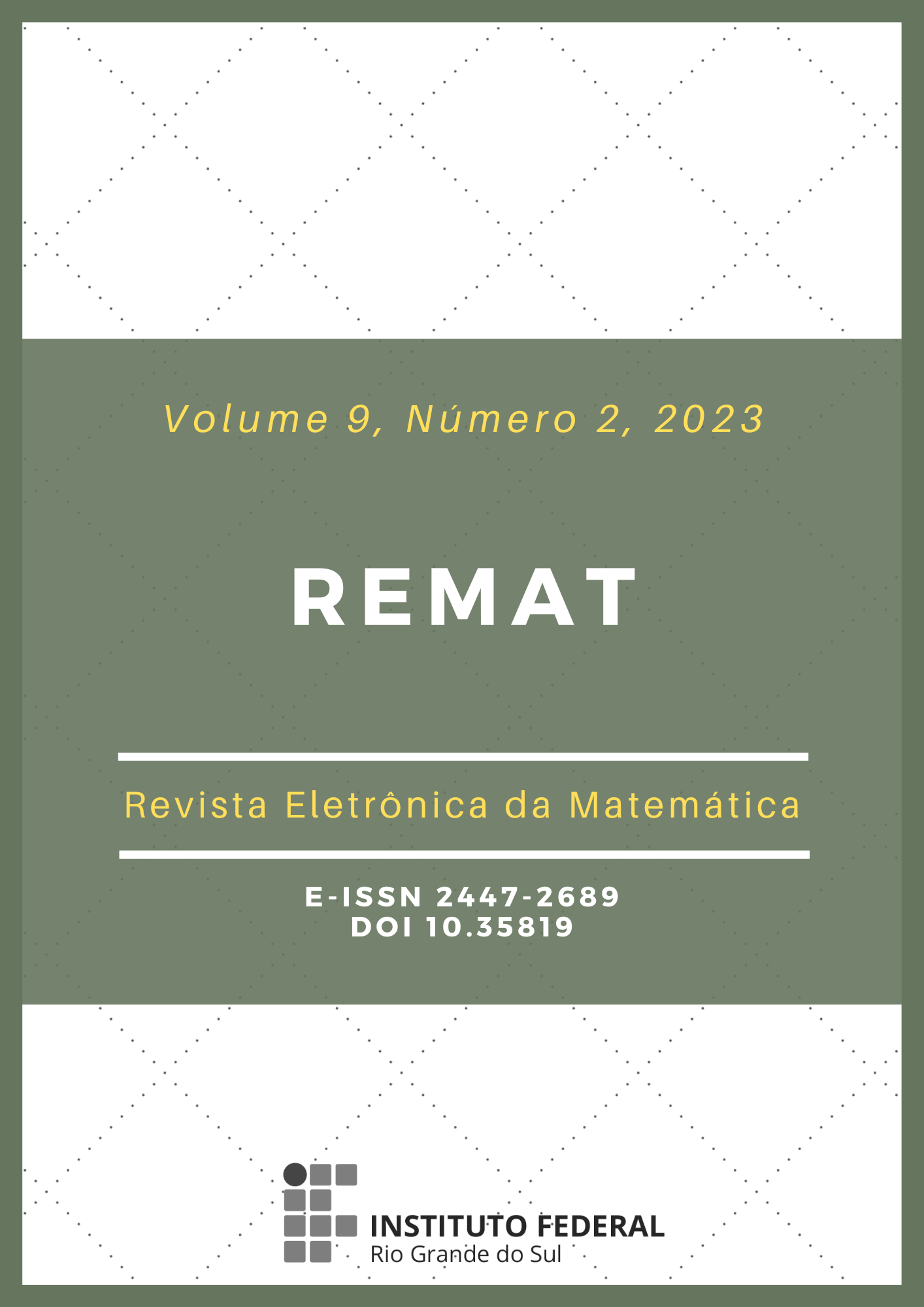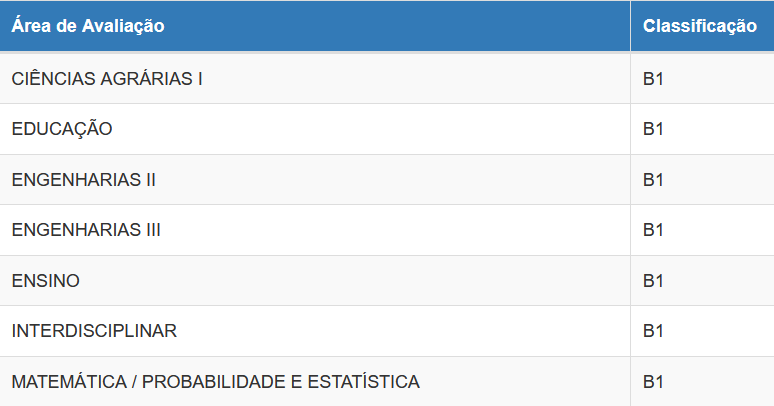A spatial version of the AK model of economic growth
DOI:
https://doi.org/10.35819/remat2023v9i2id6708Keywords:
spatial AK model, partial differential equations, Fourier Series, economic growth, mathematical ecologyAbstract
In this work, we propose a unidimensional spatial generalization of the AK model of economic growth, which is mathematically described by a parabolic linear partial differential equation for the per capita capital of the economy, with corresponding initial and boundary conditions. We obtain Fourier series solutions for the model, considering homogeneous Dirichlet, homogeneous Neumann, and homogenous mixed boundary conditions, and present numerical examples of the model. We show that the model with homogeneous Neumann boundary conditions is a natural spatial generalization for the non-spatial AK model. Besides, we find minimum critical values for the saving rate of the economy that guarantee persistent growth of the per capita capital in the long run, with homogeneous Neumann conditions presenting the lowest value, regardless of the geographical size of the economy, followed by mixed and homogeneous Dirichlet-type conditions, with the minimum value inversely depending on the geographic size of the economy in these last two cases. Finally, the spatial AK model proposed here is an interesting example of application of partial differential equation in the field of Economics.
Downloads
References
ARAKI, T.; MOLLO NETO, M. Explorando a construção computacional de sinais periódicos contínuos como combinação linear de sinais senoidais harmonicamente relacionados. Revista Engenho, v. 5, n. 8, p. 1-24, 2013. Disponível em: https://revistas.anchieta.br/index.php/RevistaEngenho/article/view/832. Acesso em: 28 dez. 2023.
AURAY, S.; EYQUEM, A.; JOUNEAU-SION, F. Wars and capital destruction. Journal of Economic Dynamics and Control, v. 41, p. 224-240, 2014. DOI: https://doi.org/10.1016/j.jedc.2014.01.023.
BARRO,R. J.; SALA-I-MARTIN, X. Economic growth. 2. ed. Cambridge, Massachusetts: The MIT Press, 2004.
BOUCEKKINE, R.; CAMACHO, C.; FABBRI, G. Spatial dynamics and convergence: The spatial AK model. Journal of Economic Theory, v. 148, n. 6, p. 2719-2736, 2013. DOI: https://doi.org/10.1016/j.jet.2013.09.013.
BOUCEKKINE, R.; FABBRI, G.; FEDERICO, S.; GOZZI, F. Growth and agglomeration in the heterogeneous space: a generalized AK approach. Journal of Economic Geography, v. 19, n. 6, p. 1287-1318, 2019. Disponível em: https://ideas.repec.org/a/oup/jecgeo/v19y2019i6p1287-1318..html. Acesso em: 28 dez. 2023.
BALLESTRA, L. V. The spatial AK model and the Pontryagin maximum principle. Journal of Mathematical Economics, v. 67, p. 87-94, 2016. Disponível em: https://ideas.repec.org/a/eee/mateco/v67y2016icp87-94.html. Acesso em: 28 dez. 2023.
BOYCE, W. E.; DIPRIMA, R. C. Equações diferenciais elementares e problemas de valores de contorno. Trad.: Valéria de Magalhães Iório. 9. ed. Rio de Janeiro: LTC Editora, 2010.
BRITO, P. A Spatial Solow Model with Unbounded Growth. Universidade Técnica de Lisboa. 2005. Disponível em: https://api.semanticscholar.org/CorpusID:123735483. Acesso em: 28 dez. 2023.
CAMACHO, C.; ZOU, B. The spatial Solow model. Economics Bulletin, v. 18, n. 2, p. 1-11, 2004. Disponível em: https://ideas.repec.org/a/ebl/ecbull/eb-04r10001.html. Acesso em: 28 dez. 2023.
CHAPRA, S. C. Métodos numéricos aplicados com MATLAB para engenheiros e cientistas. 3. ed. Porto Alegre: AMGH Editora, 2013.
COBB, C. W.; DOUGLAS, P. H. A Theory of Production. American Economic Review, v. 18, n. 1, p. 139-165, 1928.
FARLOW, S. J. Partial differential equations for scientists and engineers. New York: Dover Publications, 2016.
FEIGENBAUM, J. ; LEE, J.; MEZZANOTTI, F. Capital Destruction and Economic Growth: The Effects of Sherman's March, 1850-1920. American Economic Journal: Applied Economics, v. 14, n. 4, p. 301-342, 2022. DOI: https://doi.org/10.1257/app.20200397.
FIGUEIREDO, D. G. de. Análise de Fourier e Equações Diferenciais. Projeto Euclides. 3. ed. Rio de Janeiro: Instituto de Matemática Pura e Aplicada, 1997.
HU, H.; LAI, S. Spatio-Temporal Dynamics of the Spatial AK Model with Trade Costs. Journal of Mathematical Finance, v. 11, n. 3, p. 398-415, 2021. DOI: https://doi.org/10.4236/jmf.2021.113023.
IÓRIO, V. de M. EDP:um curso de graduação. 2. ed. Rio de Janeiro: Instituto de Matemática Pura e Aplicada, 2001.
JONES, C. I. Introdução à teoria do crescimento econômico. Rio de Janeiro: Elsevier, 2000.
JUCHEM NETO, J. P.; CLAEYSSEN, J. C. R. Capital-Induced Labor Migration in a Spatial Solow Model. Journal of Economics, v. 115, p. 25-47, 2015. DOI: https://doi.org/10.1007/s00712-014-0404-6.
KIERSTEAD, H.; SLOBODKIN, L. B. The size of water masses containing plankton blooms. Journal of Marine Research, v. 12, n. 1, p. 141-147, 1953. Disponível em: https://elischolar.library.yale.edu/journal_of_marine_research/788. Acesso em: 28 dez. 2023.
KOT, M. Elements of mathematical ecology. Cambridge, United Kingdom: Cambridge University Press, 2003.
MURRAY, J. D. Mathematical Biology: I. An Introduction. v. 17. 3. ed. New York: Springer-Verlag, 2002.
SKELLAM, J. G. Random dispersal in theoretical populations. Biometrika, v. 38, n. 1-2, p. 196-218, 1951. DOI: https://doi.org/10.2307/2332328.
SOLOW, R. M. A Contribution to the Theory of Economic Growth. The Quarterly Journal of Economics, v. 70, n. 1, p. 65-94, 1956. DOI: https://doi.org/10.2307/1884513.
SWAN, T. W. Economic Growth and Capital Accumulation. Economic Record, v. 32, n. 2, p. 334-361, 1956. DOI: https://doi.org/10.1111/j.1475-4932.1956.tb00434.x.
ZILL, D. G.; CULLEN, M. R. Equações Diferenciais. v. 2. 3. ed. São Paulo: Pearson Education do Brasil, 2014.
Downloads
Published
How to Cite
Issue
Section
License
Copyright (c) 2023 REMAT: Revista Eletrônica da Matemática

This work is licensed under a Creative Commons Attribution 4.0 International License.
REMAT retains the copyright of published articles, having the right to first publication of the work, mention of first publication in the journal in other published media and distribution of parts or of the work as a whole in order to promote the magazine.
This is an open access journal, which means that all content is available free of charge, at no cost to the user or his institution. Users are permitted to read, download, copy, distribute, print, search or link the full texts of the articles, or use them for any other legal purpose, without requesting prior permission from the magazine or the author. This statement is in accordance with the BOAI definition of open access.

































